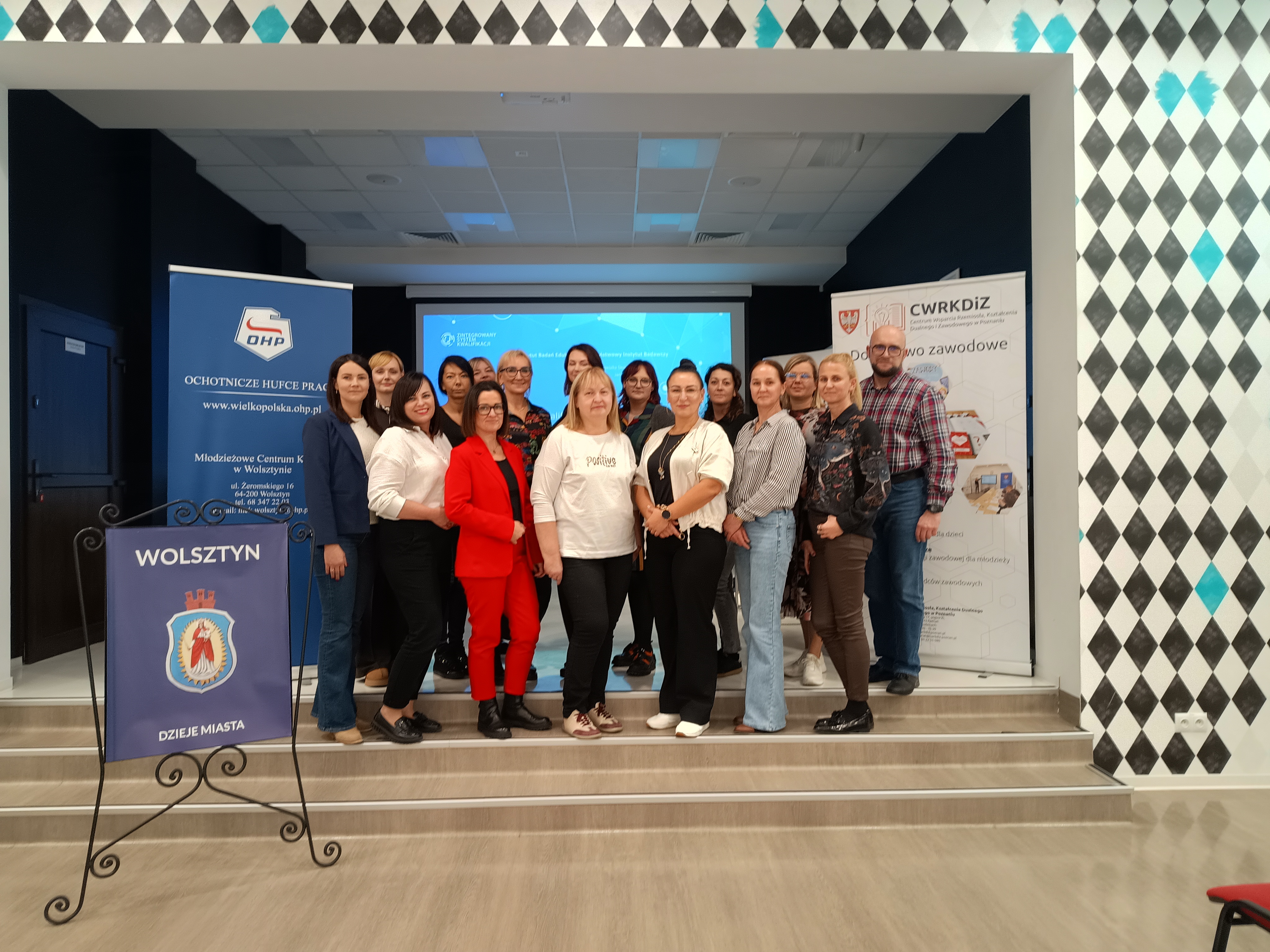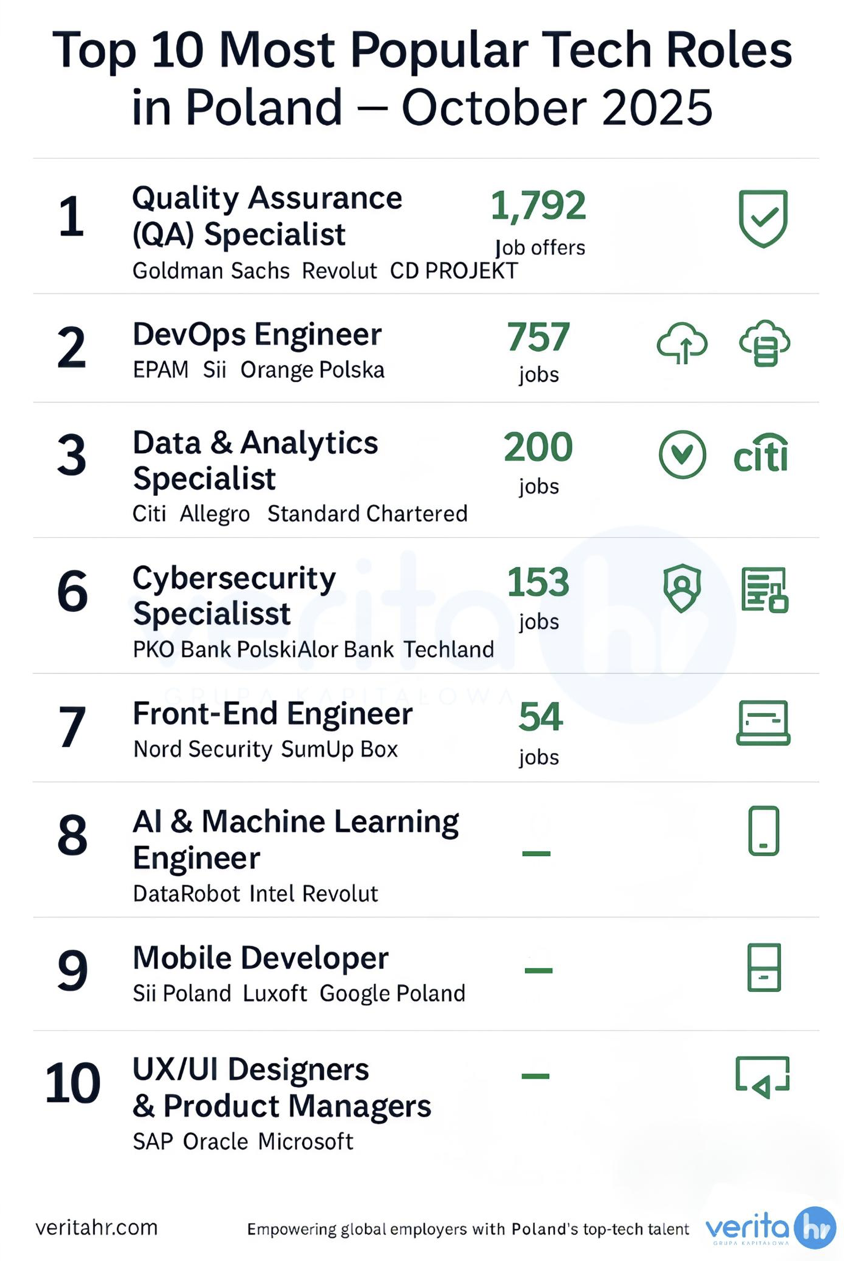If you normally picture a quant writing C++ all day, that’s a pretty good impression of a Quantitative Developer. If your image of a quant is, say, someone tweaking a Value‑at‑Risk model, then that’s closer to a Quantitative Analyst. But there’s a third “quant” role.
A Quantitative Researcher is a less common third species, only occasionally seen in the wild. They hunt for trading signals, stress‑test assumptions against decades of market data, and hand the best ideas over to the desks. In Poland, the role is still niche, but demand is rising as banks push more high‑value work east of Frankfurt.
What a Quant Researcher Does
The work of a Quant Researcher can be broken down into five stages. First comes idea generation – reading academic papers, exploring alternative data, or reviving forgotten factor models.
That’s followed by robustness checks – walk‑forward analysis to monitor data incrementally, and error-checking using either the Monte‑Carlo or Bootstrap methods to assess statistical accuracy. This stage also involves stress tests against potential crises such as those of 2008 and 2020.
Next is back-testing, which entails writing Python, R or C++ to run thousands of simulations across twenty or more years of tick‑level data to see if the ideas stick.
After that comes portfolio hand-off, which essentially entails packaging the stress-tested signal for a trading engine or asset‑allocation framework.
When all that’s done, the project is ready for publishing and peer review – think internal white papers, and defending assumptions to risk and compliance third parties.
Why the Process Matters
The European Securities and Markets Authority (ESMA) names “Technological innovation” as one of its six strategic priorities for 2024, with objectives that include researching the impact of digital innovation—such as AI, algorithmic trading, and crypto‑assets—on financial markets.
That attention trickles down: firms must now prove that every model rests on solid statistical grounds. This is a task tailor‑made for a Quantitative Researcher.
Still a Rare Role in Poland
True “Quantitative Researcher” titles remain rare on Polish job boards. A manual search on eFinancialCareers done on July 15 returned just one live advert fitting that exact job title, in Kraków. The only other two entries, both for the same city, were for Quantitative Analysts.
Salary Snapshot for 2025
A look at Glassdoor reveals similarly slim pickings for Quantitative Researcher roles in Poland. At the time of writing, just two firms, UBS and QQQ Group are featured as “popular companies for Quantitative Researchers in Poland” – or four if you count the two entries it returns for Quantitiatve Research Analysts.
Glassdoor put the median salary for a Quantitative Researcher in Poland at PLN21,000 a month across a range of PLN11-30,000, but assesses its data at “low confidence.”
For context, the Polish Central Statistical Office (GUS) recently disclosed that as at July 2024 the highest average salary was found in the “information and communication” sector (about PLN13,500 a month). The national average was placed at around PLN8,000.
A Recruiter’s View: Verita HR
Aleksandra Marcinkowska, HR Project Coondinator at VeritaHR has noticed growing demand for the niche profession through her own role as Verita HR recruiter.
“I’ve been involved in quant-related hiring processes from the very beginning,” says Marcinkowska. “Recently, I’ve noticed a growing interest in the role of Quantitative Researcher – from both candidates and employers. While this position is still relatively uncommon in Poland, demand is rising rapidly, especially within banks, investment funds, and fintech companies.”
What makes them sought out, she says, is their potent combination of “analytical thinking with programming expertise.”
Marcinkowska adds: “They don’t just analyze data, they develop and test new investment strategies. Employers are seeking individuals who can work with large datasets, code in Python, and apply advanced statistical methods. Just as important, however, is the ability to clearly communicate complex ideas.”
Marcinkowska believes the strongest candidates for Quantitative Researcher roles tend to have backgrounds in mathematics, economics, and other technical fields, “and have a passion for solving challenging problems.”
“They’re not your typical programmers or analysts, they’re researchers, focused on discovering ‘alpha’ – the elusive edge in the market,” she says.
Why The Sudden Interest in Poland?
First off, there is EU regulatory pressure – MiFID II’s RTS 6 already forces firms to log every algorithmic decision. ESMA’s 2024‑25 programme calls for tighter scrutiny of models and datasets.
Then there’s the local fintech-friendly regime to consider. The Polish Financial Supervision Authority expanded its Regulatory Sandbox in 2024, explicitly inviting data‑driven trading prototypes.
Cheaper market data is another factor worth bearing in mind – the Warsaw Stock Exchange now streams historical Level II data via its GPW Data Hub at discounts available to its members, slashing barriers for back‑testing.
Finally, there’s Poland’s robust academic pipeline – programmes like the Bachelor’s Degree in Quantitative Methods in Economics and Information Systems at the SGH Warsaw School of Economics train students in econometrics and Python from day one.
Core Skills & Tools
Here at a glance are the core aptitudes you’ll be needing to pursue your career as a Quantitative Researcher:
| Category | What employers list |
| Programming | Python (pandas, NumPy, PyTorch), C++17, Rust for latency‑critical parts |
| Statistics & ML | Linear factor models, time‑series econometrics, gradient‑boosting, reinforcement learning |
| Data mastery | Tick‑level futures/options data, alternative data (satellite, ESG, cargo manifests) |
| Infrastructure | Kubernetes, Slurm, AWS Batch, GPU clusters |
| Soft skills | Clear research writing, peer review, and regulator‑friendly documentation |
Typical Career Path
A standard route through a career in Quantitative Research would look something like this: Graduate Research Assistant, Junior Quant Researcher, Lead Researcher, and finally Head of Quant Strategies.
Many start out as assistants while finishing up a PhD in econometrics or physics. All going well, they are taken on in a junior position to run back-tests, clean up data, and keep team members in the loop with internal comms. After that they get to own a suite of signals and allocate risk budgets while mentoring up-and-coming juniors. Last but by no means least, department heads get to set company-wide research agendas and liaise with top management.
Five Quick Hiring Tips
- Sell the data, not the desk – Researchers care more about petabytes of clean history than a river‑view office.
- Open‑source first – Link to your public GitHub/Jupyter assets. It gives a sense of culture and reduces NDAs in interviews.
- Pair with a developer – A great signal dies if nobody uses it. Budget a Quant Dev alongside each researcher to maximize usage.
- Respect conferences – Let staff present at NeurIPS or the SGH Quantitative Finance Forum. This doubles as good branding.
- Clarify IP clauses – The best candidates will walk away if your side‑project rules make them feel trapped. Use the KNF sandbox template for balance.
Can Verita HR Help You Find a Quant Researcher?
Verita HR placed its first quant in 2013. Today, the firm is filling multiple Quantitative Researcher roles for global hedge funds and EU clearing houses. Our recruiters:
- Maintain a LinkedIn community of 5,500+ quant‑minded members.
- Attend events like the Women in Tech Summit and HackYeah to tap fresh talent pools.
- Partner with SGH’s Collegium of Economic Analysis for guest lectures (SGH research units).
Looking for someone who can turn raw data into alpha and defend the methodology to ESMA? Talk to the Verita HR quantitative team here today.
Verita HR offers services including RPO | Permanent Recruitment | Outsourcing | Media Services








